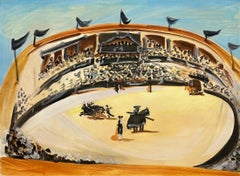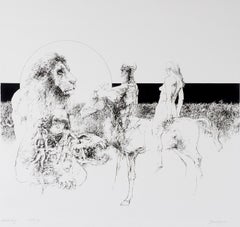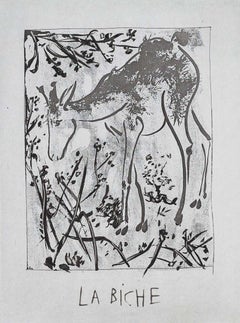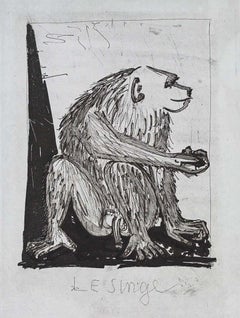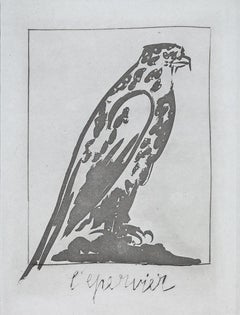Aquatint Animal Prints
1950s Modern Aquatint Animal Prints
Aquatint
1960s American Modern Aquatint Animal Prints
Aquatint
Late 20th Century Modern Aquatint Animal Prints
Etching, Aquatint
20th Century Modern Aquatint Animal Prints
Drypoint, Aquatint
20th Century Modern Aquatint Animal Prints
Drypoint, Aquatint
20th Century Modern Aquatint Animal Prints
Drypoint, Aquatint
20th Century Modern Aquatint Animal Prints
Etching, Aquatint
20th Century Modern Aquatint Animal Prints
Drypoint, Aquatint
20th Century Modern Aquatint Animal Prints
Drypoint, Aquatint
Late 20th Century American Modern Aquatint Animal Prints
Handmade Paper, Etching, Aquatint
20th Century Modern Aquatint Animal Prints
Drypoint, Aquatint
20th Century Modern Aquatint Animal Prints
Drypoint, Aquatint
20th Century Modern Aquatint Animal Prints
Drypoint, Aquatint
Late 20th Century American Modern Aquatint Animal Prints
Handmade Paper, Etching, Aquatint
Late 20th Century American Modern Aquatint Animal Prints
Handmade Paper, Etching, Aquatint
Late 20th Century American Modern Aquatint Animal Prints
Handmade Paper, Etching, Aquatint
1960s Modern Aquatint Animal Prints
Aquatint, Etching
Late 20th Century American Modern Aquatint Animal Prints
Handmade Paper, Etching, Aquatint
1950s Modern Aquatint Animal Prints
Aquatint
1960s Modern Aquatint Animal Prints
Aquatint, Etching
1950s Modern Aquatint Animal Prints
Etching, Aquatint
1950s Modern Aquatint Animal Prints
Etching, Aquatint
1960s Modern Aquatint Animal Prints
Aquatint, Etching
1960s Modern Aquatint Animal Prints
Aquatint, Etching
1960s Modern Aquatint Animal Prints
Aquatint, Etching
1950s Modern Aquatint Animal Prints
Etching, Aquatint
Late 20th Century Modern Aquatint Animal Prints
Etching, Aquatint
1950s Modern Aquatint Animal Prints
Etching, Aquatint
1950s Modern Aquatint Animal Prints
Etching, Aquatint
1950s Modern Aquatint Animal Prints
Etching, Aquatint
1950s Modern Aquatint Animal Prints
Etching, Aquatint
1950s Modern Aquatint Animal Prints
Etching, Aquatint
1960s Modern Aquatint Animal Prints
Etching, Aquatint
1950s Modern Aquatint Animal Prints
Etching, Aquatint
1960s Modern Aquatint Animal Prints
Aquatint, Etching
1950s Modern Aquatint Animal Prints
Etching, Aquatint
Mid-20th Century Modern Aquatint Animal Prints
Aquatint, Etching
21st Century and Contemporary Modern Aquatint Animal Prints
Paper, Etching, Aquatint
20th Century Modern Aquatint Animal Prints
Drypoint, Aquatint
20th Century Modern Aquatint Animal Prints
Drypoint, Aquatint
20th Century Modern Aquatint Animal Prints
Drypoint, Aquatint
20th Century Modern Aquatint Animal Prints
Drypoint, Aquatint
20th Century Modern Aquatint Animal Prints
Drypoint, Aquatint
20th Century Modern Aquatint Animal Prints
Drypoint, Aquatint
1950s Modern Aquatint Animal Prints
Aquatint, Etching
1970s Modern Aquatint Animal Prints
Etching, Aquatint
1950s Modern Aquatint Animal Prints
Etching, Color, Aquatint
1960s Modern Aquatint Animal Prints
Etching, Aquatint
1950s Modern Aquatint Animal Prints
Aquatint, Etching
1960s Modern Aquatint Animal Prints
Aquatint
1950s Modern Aquatint Animal Prints
Aquatint
